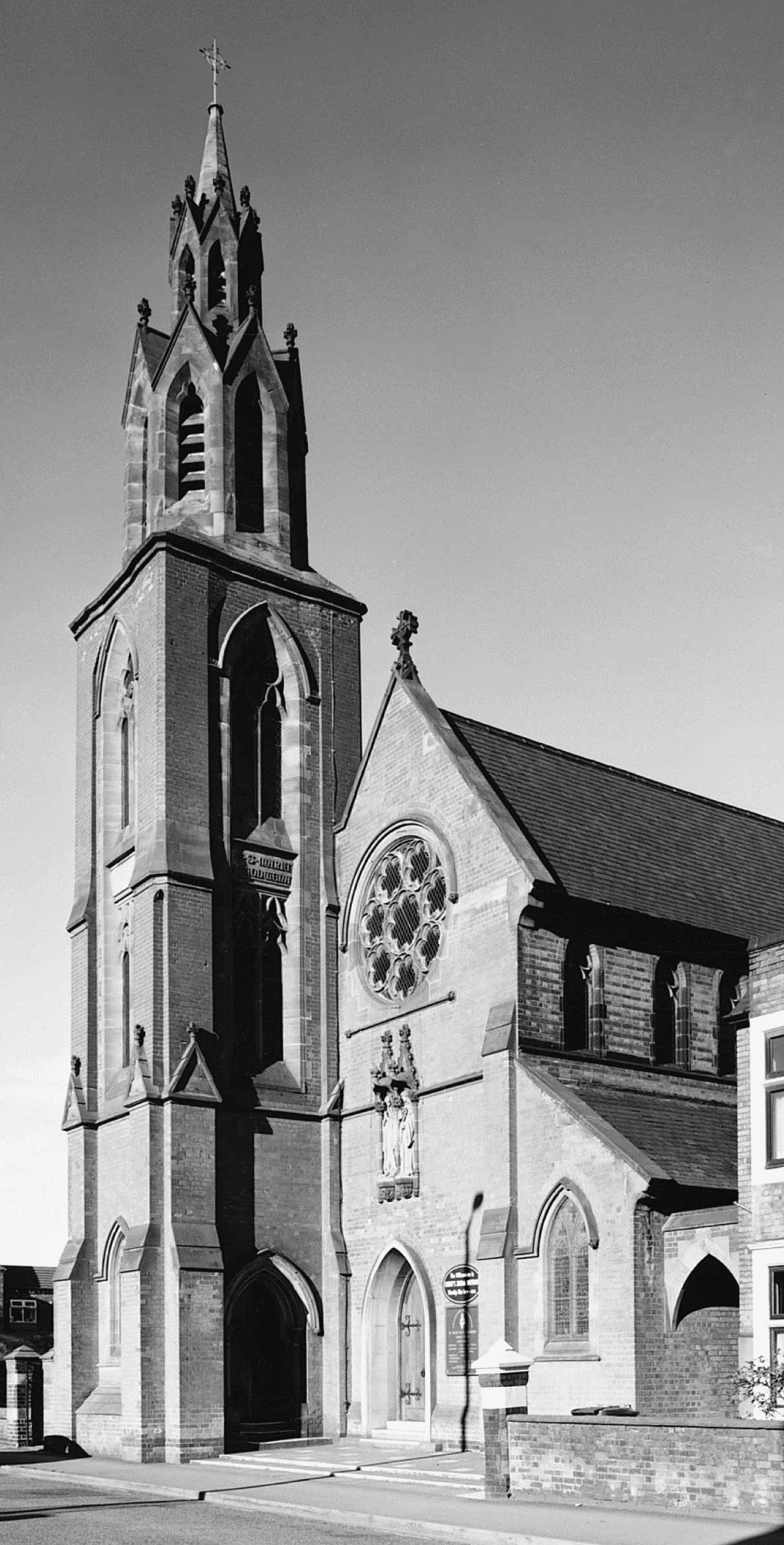Pages 130-131
A History of the County of Stafford: Volume 9, Burton-Upon-Trent. Originally published by Victoria County History, London, 2003.
This free content was digitised by double rekeying. All rights reserved.
In this section
Roman Catholicism
Thomas, Lord Paget (d. 1590), was a recusant who, it was reported in 1577, would 'never to come unto the church'; in 1580 he was committed to the custody of the dean of Windsor in a failed attempt to convert him to protestantism. Paget was said to have 'perverted to Popery' many in Staffordshire, and in 1586 it was claimed that some of his servants were 'ill affected in religion, come seldom to the church, and that for fashion's sake only, and come not to the communion at all'. (fn. 3) His household steward in the mid 1570s was Peter Botrell, a Roman Catholic priest, who may also have acted as chaplain, celebrating mass for the household in Burton. (fn. 4) The composer William Byrd, a church papist, received a pension from Paget 1576-83 and visited his master at Burton, and by 1580 Paget had a choir which probably sang the mass. (fn. 5) At Easter 1582 Paget even tried to replace communion bread at the parish church with 'little singing cakes after the old popish fashion'. (fn. 6) He fled to the Continent in 1583 after he fell under suspicion of involvement in the Throckmorton plot. (fn. 7) His son William (later Lord Paget) was made a ward of the Crown in 1587 and was brought up as a protestant. (fn. 8)
Five people in Burton parish were fined as recusants in 1595-6, including Gabriel Royle (or Royley), an alabasterer; (fn. 9) five were presented as recusants in 1635, and six in 1641, three of them gentlemen belonging to the same family. (fn. 10) Ten people in Burton and Burton Extra were convicted as recusants in 1667, including Robert Cotton, a surgeon, who was again convicted in the late 1670s with three other members of his family. (fn. 11) William Cotton, also a surgeon and probably Robert's son, was listed as a recusant with his wife and sister in 1706. (fn. 12) Eleven people were returned as papists in 1767. (fn. 13) William Hassall, a priest who died at Burton in 1741, had probably ministered to Catholics in the town and the surrounding area. (fn. 14)
A Roman Catholic chapel established at Woodlane, in Yoxall, in 1794 was probably attended by Catholics from Burton, and from the 1830s the minister, James Jeffries, travelled to Burton to celebrate mass there. He is said to have used first an old malthouse at the back of the Crown inn, High Street, and then a cottage at the back of the Old White Lion inn at the corner of Lichfield Street and Fleet Street. (fn. 15) Most of Jeffries's congregation apparently were Irish, and in 1839 the marquess of Anglesey refused Jeffries's request for land for a school-chapel on the grounds that the numbers of Catholics were insufficiently large. (fn. 16) In 1843 Jeffries said mass on Sunday in Burton once a month at 8 a.m., in premises which he described as 'so objectionable' that some felt 'a repugnance to attend'. He again applied to the marquess that year for land on the east side of the railway line near Horninglow Street, claiming that the number of Catholics in Burton had increased from about 40 in 1839 to nearly 120, mostly by immigration from Ireland. (fn. 17) Evidently he was refused, because Catholics were still meeting in a cottage in 1851, when the average Sunday morning congregation was 160, besides Sunday school pupils. (fn. 1)
Jeffries's successor, Patrick O'Sullivan (1851-2), secured land for a chapel, set back from the east side of Guild Street, and a school-chapel was opened in 1852. A presbytery was built in front of the church, and the first resident priest was William O'Grady (1852- 6). (fn. 2) A new church was built in 1879 on the street front, partly paid for by F. M. Spilsbury of Willington (Derb.), a former Anglican priest who had converted to Roman Catholicism. (fn. 3a) Cardinal Manning preached at the opening service. (fn. 4a) That church was still open in 2000, served by its own resident priest.
Church Buildings
The 1852 school-chapel, dedicated to St. Modwen, was a small brick building in Gothic style; orientated north-south, it had a north porch and one bell in a bellcote. (fn. 5a) The 1879 church, dedicated to St. Mary and St. Modwen, was orientated east-west and built in brick in a Decorated style to the design of J. K. Morley. It consisted of a sanctuary with a sacristy to the south, nave of six bays, and side aisles, with the base of a tower at the west end of the north aisle. (fn. 6a) The Caen stone reredos was carved by John Roddis of Birmingham. (fn. 7a) The tower and spire were completed in 1897. (fn. 8a) The interior of the church was re-ordered in 1975 to comply with the provisions of the Second Vatican Council: an altar was placed at the east end of the nave and the font was moved from the west end of the south aisle to the south side of the nave altar. (fn. 9a)
When the new church was built in 1879 the 1852 building was retained as a school. A new school was built to the north of the church in 1910 and the old school became the parish hall until it was sold to Burton corporation in 1969. In 1974, after the school was moved to new premises in Horninglow, the 1910 school building was converted to a parish centre. (fn. 10a)

St. Mary and St. Modwen's Roman Catholic church, Guild Street, from the southwest


